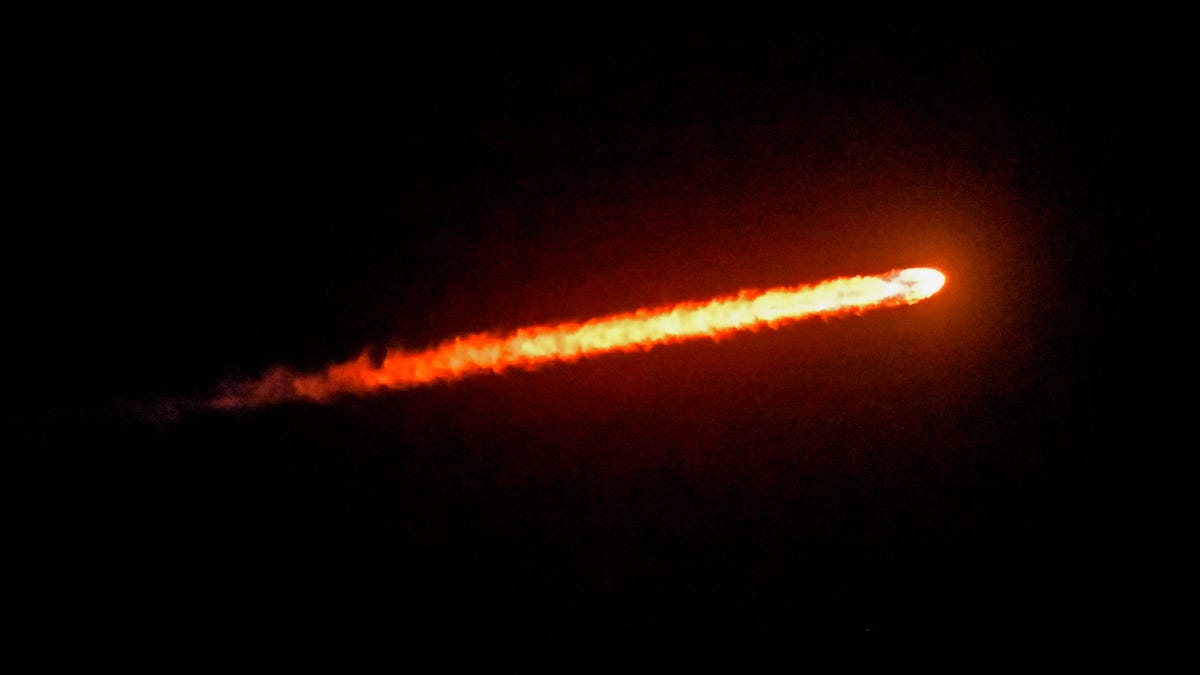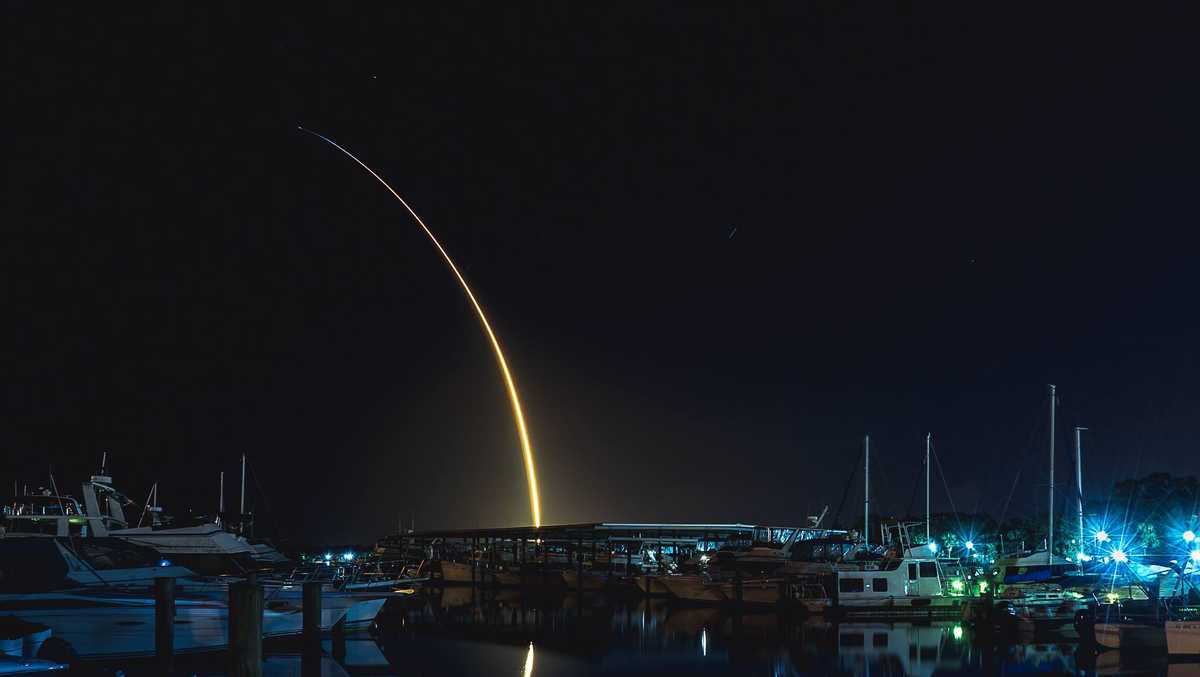The night sky over Florida’s iconic Space Coast erupted in a fiery spectacle recently, as SpaceX orchestrated a rare and captivating double-header of Falcon 9 rocket launches. This wasn’t just another routine liftoff; it was a potent demonstration of humanity’s accelerating reach into the cosmos, specifically aimed at weaving an ever-denser web of high-speed internet across our planet.
On the evening of November 14, at precisely 11:40 p.m. EST (0440 UTC), the first of the two giants, a Falcon 9 rocket, roared to life from NASA’s historic Kennedy Space Center. Moments later, after a breathtaking climb, it successfully deployed 29 Starlink broadband satellites into low-Earth orbit. This mission, designated Starlink 6-87, was just the first act in a stunning display of operational prowess, underlining SpaceX’s relentless pursuit of its ambitious goals.
A New Era of Connectivity Dawns
Starlink, SpaceX’s revolutionary satellite internet constellation, aims to provide high-speed, low-latency broadband internet globally, particularly to rural and remote areas where traditional internet infrastructure is unreliable or non-existent. Each successful launch adds more nodes to this rapidly expanding network, bringing the dream of universal connectivity closer to reality. Imagine a remote village in the Amazon or a research outpost in Antarctica suddenly gaining access to the same internet speeds as a bustling metropolis. This is the promise that Starlink, with each new batch of satellites, continues to fulfill.
“The sheer frequency and precision of these launches are not just technical achievements; they represent a fundamental shift in how we conceive of global communication infrastructure. We are moving beyond terrestrial limitations at an astonishing pace.” – Industry Analyst
The double-header was more than just a logistical marvel; it was a testament to the maturation of SpaceX’s launch capabilities. Orchestrating two separate launches within a tight window from adjacent launchpads requires immaculate planning, flawless execution, and a robust, reusable rocket system that has truly come into its own. The sight of multiple Falcon 9 first-stage boosters returning to Earth for pinpoint landings after delivering their payloads has become a familiar, yet no less astonishing, ballet of engineering.
The Economic and Social Ripple Effect
- Bridging the Digital Divide: Starlink’s primary impact is on connectivity. It opens up opportunities for education, healthcare, and economic development in underserved regions.
- Economic Stimulus: The growth of the commercial space industry, spurred by companies like SpaceX, creates thousands of high-tech jobs and drives innovation in related sectors.
- Competitive Landscape: Starlink’s success is forcing traditional telecommunication companies to innovate and expand their own services, benefiting consumers globally.
However, this rapid expansion isn’t without its detractors or its complex challenges. The sheer volume of satellites being launched into low-Earth orbit has sparked intense debates among astronomers, environmentalists, and policymakers. Questions surrounding space junk, light pollution, and the long-term sustainability of such massive constellations are growing louder with each successive launch.
Astronomers worry about the impact of these bright, numerous satellites on ground-based observations, potentially obscuring faint objects and interfering with critical research. Environmentalists raise concerns about the increasing risk of orbital collisions and the eventual re-entry of thousands of defunct satellites, which could contribute to atmospheric pollution. These are not trivial concerns; they speak to the very balance between technological advancement and responsible stewardship of our shared cosmic backyard.
The regulatory framework for space operations is struggling to keep pace with the innovation. International treaties and national laws, often drafted in an era of less frequent and less commercial space activity, are now being stretched to their limits. Who owns the orbital lanes? Who is responsible for debris? These are questions that demand urgent and cooperative answers from the global community, even as companies like SpaceX continue to push the boundaries of what’s possible.
The success of the Falcon 9, the workhorse of SpaceX’s fleet, is central to this narrative. Its reusability has dramatically reduced the cost of access to space, fundamentally altering the economics of satellite deployment. What once cost hundreds of millions of dollars and months of preparation can now be achieved for a fraction of the price and with astonishing regularity. This cost reduction is not just about profit margins; it’s about making space more accessible for scientific research, commercial ventures, and ultimately, for enhancing life on Earth.
Looking ahead, the implications of Starlink’s growth are profound. It represents a pivot point in the history of human communication, moving us towards a future where geographical barriers to information access are increasingly irrelevant. But this future demands careful consideration and proactive solutions to the challenges it presents. The sight of those rockets ascending into the night sky is a powerful reminder that while the stars are within our reach, the responsibility for their stewardship falls squarely on our shoulders.
The ambition of SpaceX, fueled by such breathtaking displays of engineering, stands as a testament to the human drive to explore, to connect, and to overcome perceived limitations. The cosmos is no longer just for government agencies; it is a burgeoning frontier for private enterprise, with far-reaching consequences for everyone on Earth. The dual launch from Cape Canaveral wasn’t just a moment in time; it was a powerful echo of a new era, asserting that the very fabric of our global connectivity is being rewoven in the silent, star-strewn void above.
As the final stage detached and the satellites fanned out across their designated orbits, one couldn’t help but ponder the sheer audacity of the endeavor. This isn’t just about faster downloads; it’s about reshaping economies, empowering communities, and challenging the very notion of what it means to be connected in the 21st century. The implications are staggering, pointing towards a future where the digital divide, once an insurmountable chasm, might finally begin to close, all thanks to a constellation of tiny, brilliant stars engineered by human ingenuity.
Ultimately, these launches are a beacon, illuminating both the incredible potential and the complex responsibilities that accompany our audacious journey into space. They are a loud and clear declaration that the future of global communication is no longer bound by terrestrial cables, but by the boundless expanse of the cosmos itself.


